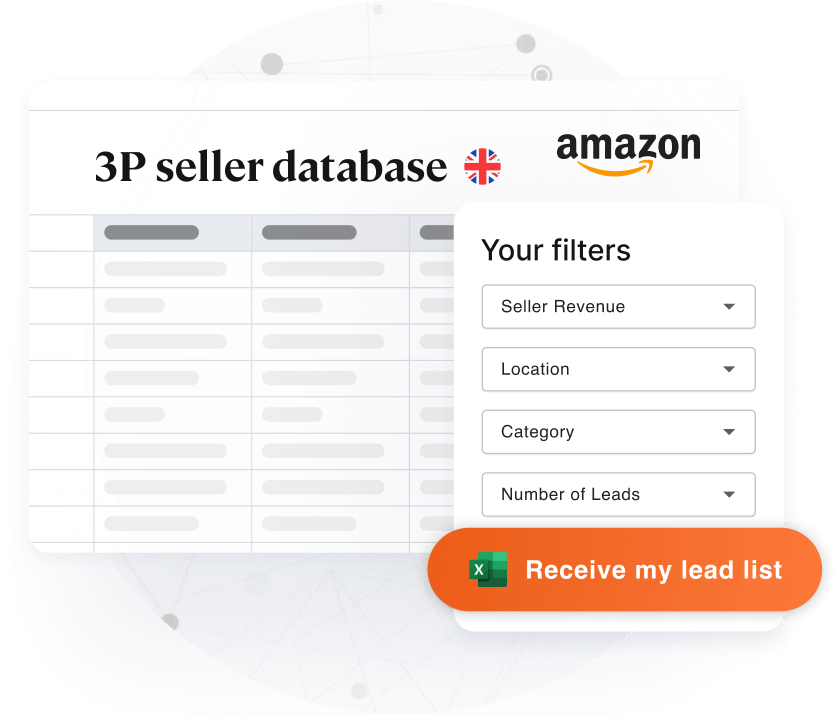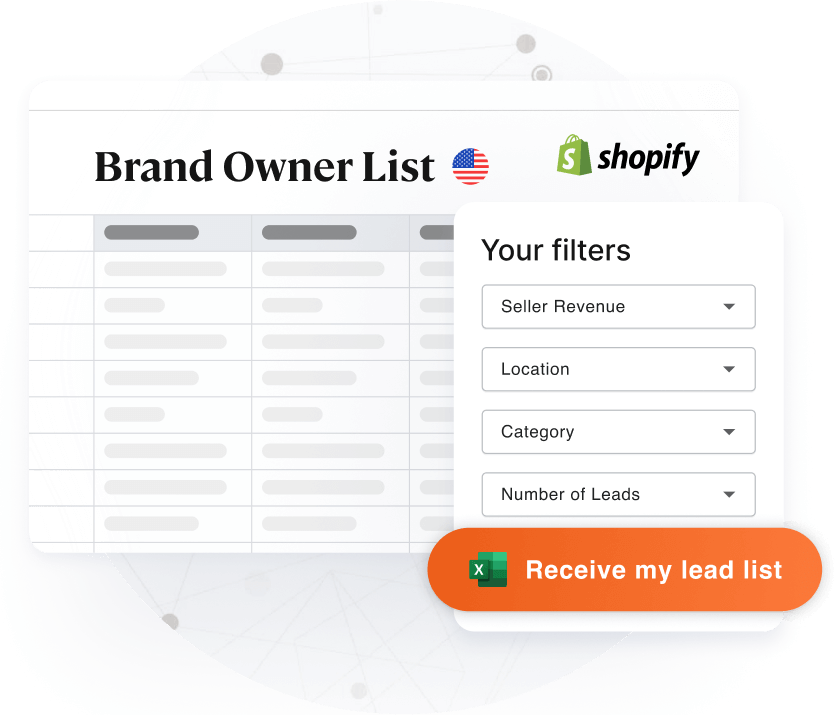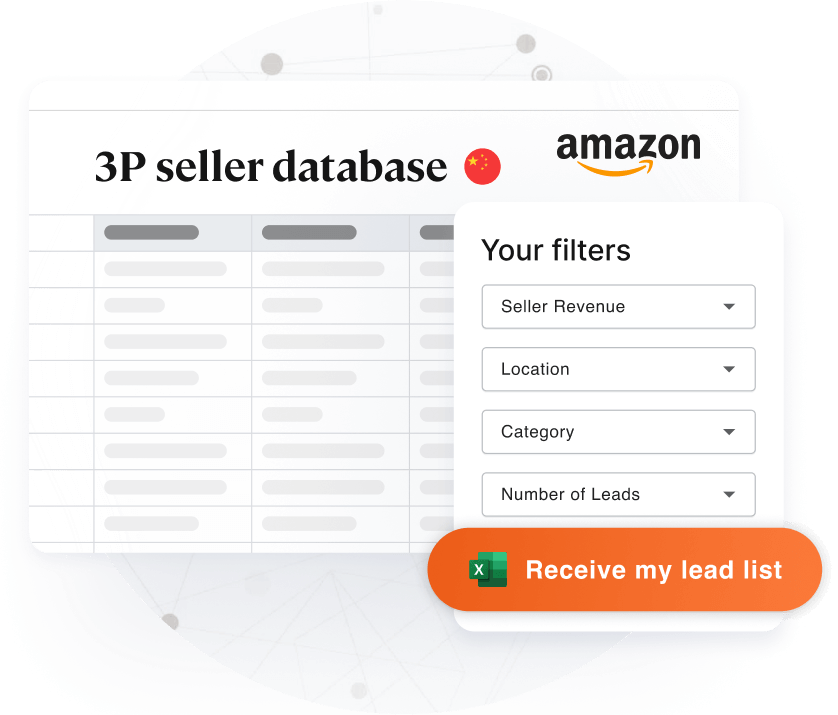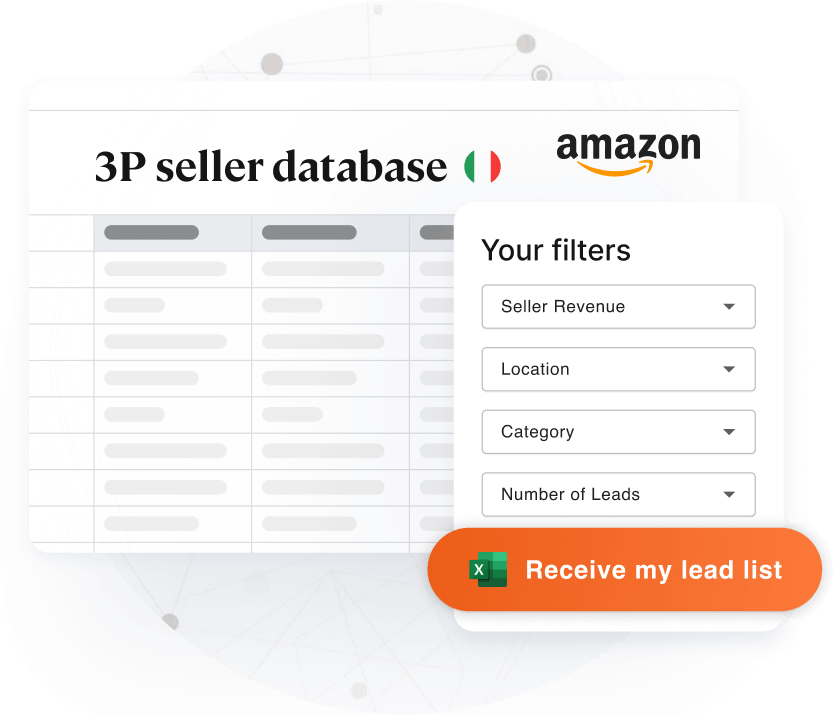Introduction
In the dynamic world of eCommerce, Amazon stands proud as the undisputed king, attracting millions of ambitious sellers seeking their share of the pie of success.
But here's the catch: success on Amazon isn't just about luck; it's about having the right business model that resonates with your target audience.
Over 50% of Amazon’s retail revenue comes from third-party sellers.
In this blog post, we’ll dive exclusively into Jungle Scout's comprehensive survey of over 2,600 Amazon sellers, unveiling the untold stories behind the six most popular business models used by these entrepreneurs.
This information could prove to be a gold mine for B2B service providers looking to diversify their Amazon leads list.
First, let’s take a look into the business models and the percentage of Amazon sellers employing them before we dissect each one for you and explain how they can help you score more lucrative leads.
Breakdown of Amazon Sellers per Business Models:
- Private Label: 54%- Wholesale: 26%
- Retail Arbitrage: 25%
- Online Arbitrage: 24%
- Dropshipping: 17%
- Handmade: 8%
Who are ‘Private Label’ Amazon Sellers?
Amazon private label 3P sellers are retailers that rebrand already-manufactured goods under their very own brand name.
So the goods already exist, but the seller just adds their own branding twist to it.
Here’s a 3-step breakdown of what happens:
Step 1 - The seller finds a niche product opportunity.
Step 2 - He then locates a manufacturer who creates + improvises on the existing product with (hopefully) marketable improvements.
Step 3 - The seller creates their own brand and promotes + sells the product on Amazon.
It offers sellers more control over their branding, pricing, packaging, supply chain, and marketing. It also means that private label sellers have more needs for contractors to help them with those tasks.
Considering 56% of the Amazon sellers list doing private labeling generate $5000+ in monthly sales, and 35% of them start achieving profits within the first six months of selling on Amazon - tapping into this segment could mean a steady stream of conversions for your B2B business.
Top 5 Categories Where Private Labeling is Hot Right Now:
- Home and Kitchenware: 40%
- Fitness and Outdoor Equipment: 21%
- Baby, Health, and Household Goods: 15%
- Beauty and Personal Care Items: 15%
- Dinnerware: 14%
If you want to make the most of the current hot trends, now's the time to explore the amazon seller database, peek into lucrative markets and forge valuable partnerships with retailers and entrepreneurs seeking to launch their own brands.
Remember, the key to thriving in private labeling on Amazon is all about offering customization, top-notch quality, and innovative designs that'll keep customers coming back for more.
The Biggest Challenges Facing Private Label Sellers:
- Product listing optimization: 65%
- Sourcing goods to sell: 62%
- Inventory management: 58%
- Amazon pay-per-click bids management: 55%
- Scoring product reviews: 50%
If you’re an SEO service provider or own a marketing agency, now’s the right time to make the jump. 65% of the list of all Amazon sellers doing private labeling are already screaming for keyword help.
And if you primarily manufacture household goods and kitchen items, it’s a great time to reach out to Amazon private label 3P sellers to expand your business.
The Inside Scoop:
Here are a few examples of Amazon Private Label Sellers thriving on Amazon.com, extracted from our Amazon 3P Seller Database
|
Private Label Amazon Sellers |
Best Selling Category |
Annual Revenue |
|
Pet Supplies |
$10M+ |
|
|
Health & Household |
$10M+ |
|
|
Home & Kitchenware |
$5,000,001 - $10M |
|
|
Office Supplies |
$1,000,001 - $5M |
|
|
Toys & Games |
$500,001-$1M |
What are Amazon ‘Wholesalers’?
Amazon also has a whole lot of ‘wholesalers’.
Sellers that purchase multiple goods in bulk for low/discounted rates and sell them individually on marketplaces are called wholesalers. According to the stats, 47% of the Amazon seller list of wholesalers spend close to $2500 to get started.
First, they set out to find the right supplier. Once they’ve sourced and purchased the goods, they start selling them for a profit.
Hot-selling Niches in Wholesaling:
- Home and kitchenware: 47%
- Gaming and toys: 32%
- Fitness equipment and outdoors: 29%
- Beauty + personal care: 28%
- Baby and health care goods: 27%
Major Challenges for Wholesalers on Amazon:
- Management of costs, revenue, and other financial metrics: 50%
- Product listing optimization: 47%
- Supplier sourcing: 45%
45% of these sellers are product-hunting.
The Inside Scoop:
Here comes another exclusive list of Amazon sellers incorporating wholesaling from our very own Amazon seller database:
|
Amazon Wholesalers |
Best Selling Categories |
Annual Revenue |
|
Patio, Lawn, & Garden |
$10M+ |
|
|
Sports & outdoors |
$10M+ |
|
|
Beauty & Personal care |
$10M+ |
|
|
Health & Household |
$1,000,001 - $5M |
|
|
Home & Kitchenware |
$1,000,001 - $5M |
Private Label Sellers vs Wholesalers
With so much selling going on, many B2B businesses find it difficult to segment their target markets. Here’s how you can differentiate between the two:
- Carrying 1 to 5 brands on Amazon → Seller is usually considered as a Private Label Seller (selling their own brand).
- Carrying 5+ brands → Seller is usually considered as a Wholesaler.
What is ‘Retail Arbitrage’ on Amazon?
This biz model takes you back to the brick-and-mortar ways. Sellers source low-priced products or discounted goods from physical stores and sell them on Amazon for a profit.
Imagine you went to the Nike factory outlet and found a pair of sneakers selling for $30. You bought a bunch of them and sold them on Amazon for $75. That’s a $25 profit per piece - not bad we’d say.
Though the average profit margins tend to be less than 20% - it really depends on the goods being sold. 62% of the Amazon sellers doing retail arbitrage generate around $5000 and 25% earn close to $500.
There’s still potential for growth as more and more gen-zers are jumping onto the bandwagon and achieving massive success.
Hot-Selling Niches in Retail Arbitrage:
- Homeware and Kitchenware: 47%
- Toys and Gaming: 41%
- Books: 34%
- Beauty and Personal Care: 33%
- Grocery and gourmet food: 27%
Major Challenges Facing Retail Arbitrage Sellers:
- Financial Performance Management: 44%
- Supplier sourcing: 38%
- Product listing optimization: 31%
As a B2B service provider, these are some key opportunities for you to seize to generate more leads. You can reach out to the sellers by manually searching their contact information. Or you could opt for the easier way out and gain instant access to their emails, numbers, and other financial metrics through our B2B contact database.
What Does ‘Dropshipping’ Mean on Amazon?
You may have already heard of dropshipping before.
The Amazon seller here doesn't hold inventory for the goods. Instead, they pass the orders to the supplier/manufacturer directly who handles the shipping as well.
Recent stats reveal that 39% of dropshippers are generating close to $5,000 and 48% are witnessing profit margins between 11 to 25%.
Hot-Selling Niches in Dropshipping:
- Homeware and Kitchenware: 50%
- Sports and Outdoor equipment: 35%
- Kitchen and Dining: 32%
- Home Improvement Tools: 32%
- Gardening and Outdoors: 31%
Major Challenges for Dropshippers on Amazon:
- Product listing optimization: 64%
- Management of costs, revenue, and other financial metrics: 54%
- Customer Reviews: 50%
Calling out all keyboard avengers and marketing wizards - now’s the time to embrace the challenge and showcase your talent.
What About ‘Online Arbitrage’ on Amazon?
Take the ‘retail’ biz model but source the products from an online store or website instead of a physical outlet - that’s online arbitrage for you.
For instance, while window shopping at Kohls.com, you come across a branded mascara at a great deal: $6. You went ahead, bought a few pieces, and flipped them on Amazon for $23. You make a straightforward profit of $17 - cool, isn’t it?
55% of the sellers make around $5,000 per month on Amazon doing online arbitrage while 16% earn between $1,000 and $5,000. Profit margins are usually more than 16%.
Hot-Selling Niches in Online Arbitrage:
- Homeware and Kitchenware: 55%
- Toys and gaming: 50%
- Beauty and personal care 38%
- Books: 35%
- Household, Healthcare, and Baby care goods: 34%
Major Challenges for Online Arbitrage-ers on Amazon:
- Financial Performance Management: 44%
- Supplier sourcing: 40%
- Product listing optimization: 34%
If you manufacture goods in the homeware, kitchenware, or gaming niche, this platform could just be the start of your very own success story.
Selling Handmade Goods on Amazon
One of the least expensive business models - Amazon's handmade sellers create their own products, such as jewelry, accessories, and home decor, to sell on the marketplace.
50% of the Amazon sellers list making handmade goods earn less than $5000, and 30% earn around $3000 selling on the marketplace. The profit margins, on the other hand, are way better with 52% sellers making an average of 11 to 25% profit.
Top Challenges Facing Handmade Goods Amazon Sellers:
- Sourcing goods/ DIY product ideas: 61%
- Product listing optimization: 61%
- Keyword sourcing: 49%
Businesses selling gemstones, beads, and metals can cater to the thriving market for handmade jewelry on Amazon.
Additionally, there's a growing demand for DIY household goods like pottery decor - making Quarts, Phosphate, and Bikaner clays highly valuable for crafting unique and trendy items.
Another emerging trend is the popularity of holographic glittery paint for sellers to create captivating wall art that appeals to modern aesthetics. You could sell raw art supplies and artsy palettes with custom glitter combos.
Conclusion
Now that you know what sells, the best way forward would be to get in touch with the right market segments and pitch your offerings.
Our targeted Amazon seller databases can connect you with potential sellers who are actively seeking suppliers like you. Don't miss this chance to grow your business and unlock new opportunities in the Amazon ecosystem. Get in touch with SellerDirectories today for your very own exclusive Amazon leads list tailored just for your business.






